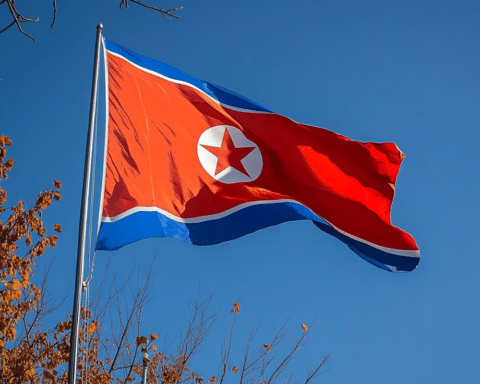In a move that rekindles Cold War-style tactics on the Korean Peninsula, North Korea has resumed its provocative strategy of launching balloons likely carrying trash across its border into South Korea. This development, confirmed by South Korea’s military earlier this week, follows a significant defense deal between North Korean leader Kim Jong Un and Russian President Vladimir Putin, which has raised international concerns about heightened provocations aimed at Seoul.
South Korea’s Joint Chiefs of Staff have observed the balloons drifting southeast, propelled by northerly winds favorable for such launches. In response, South Korean authorities have issued warnings to citizens, urging them not to handle the balloons and to report any sightings to military or police officials. Additionally, the Seoul city government has alerted residents to be cautious of any objects falling from the sky, as these balloons have been spotted flying over the capital, only an hour’s drive from the border.
Historically, the balloons have been used as a method of psychological warfare, dropping non-lethal waste such as manure, cigarette butts, scraps of cloth, waste batteries, and vinyl. No dangerous materials have reportedly been found among the debris. Observations suggest that the contents, including paper and vinyl scraps, are deliberately manufactured to avoid revealing any sensitive information about consumer products from North Korea.
This recent flurry of activity is a direct retaliation against South Korean activists’ renewed efforts to disseminate anti-North Korean propaganda. These activists have sent balloons carrying 300,000 propaganda leaflets, 5,000 USB sticks loaded with South Korean pop songs and TV dramas, and U.S. dollar bills across the border. Such actions are seen as grave provocations by Pyongyang, which tightly controls access to foreign news and media among its population.
In the face of these developments, South Korea’s response has been twofold. Militarily, it has redeployed large loudspeakers along the border for the first time in six years, resuming broadcasts that not only include popular K-pop hits but also deliver weather forecasts, news updates, and criticisms of North Korea’s policies and actions. Diplomatically, a joint statement by South Korea, the United States, and Japan has strongly condemned the expanding military cooperation between North Korea and Russia. The trio has expressed grave concerns regarding the implications for peace on the Korean Peninsula, the global non-proliferation regime, and solidarity with Ukraine.
The backdrop to these heightened tensions includes a recent meeting in Pyongyang where Kim Jong Un and Vladimir Putin vowed mutual support in the event of an attack, marking a significant moment in North Korean-Russian relations since the Cold War. The U.S. and its allies are wary of this partnership, particularly in light of North Korea’s suspected provision of conventional arms to Russia in exchange for military and economic support.
Amid these geopolitical maneuvers, the United States has reinforced its commitment to the defense of South Korea and Japan. This commitment was underscored by the recent arrival of a U.S. nuclear-powered aircraft carrier in South Korea, set to participate in joint military exercises with South Korea and Japan aimed at enhancing regional security and preparedness.
This ongoing saga reflects the enduring legacy of the 1950-53 Korean War, which concluded with an armistice but no peace treaty, leaving the Korean Peninsula in a perpetual technical state of war. As both sides of the 38th parallel continue their age-old dance of provocation and retaliation, the international community watches closely, hoping for a resolution that leads to lasting peace in the region.




